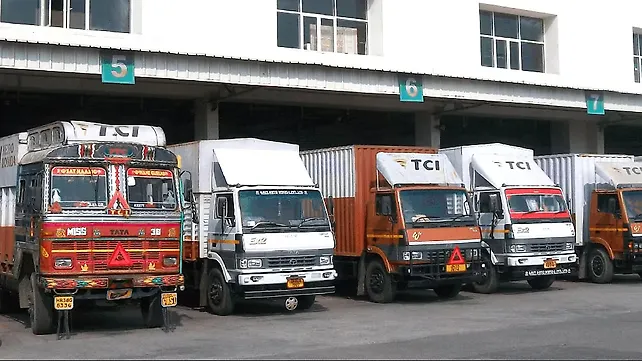
The logistics sector is generally seen as the fastest adopter of alternative fuels and new technologies. For instance, the three-wheeler segment in India has become the poster boy of electric vehicle (EV) adoption in India. Sales of e3Ws, for the first time in India's automobile market history, surpassed the sales of internal combustion engine-powered three-wheelers in May 2022.
Data sourced from Vahan Portal and the Federation of Automobile Dealers Association (FADA) of India points out that against 18,187 ICE three-wheelers sold in May 2022, a total of 23,321 electric three-wheelers were sold in the same month. Despite this, the price difference between the ICE and electric variants continues to be above INR 100,000, and this difference is even more noticeable in the bigger commercial category that includes trucks and pickups.
High amounts of capital expenditure (CapEx) required to shift from ICE to EV is probably why the rate of EV adoption in the bigger commercial vehicle categories is not that encouraging.
Even as alternative fuel vehicles are changing the way the world thinks about energy and transportation, the shift to alternate propulsion technologies in India, including electric, natural gas or hydrogen, isn’t likely to happen in a hurry.
Perks Of A Medium Asset Model
One of the largest logistics companies in India, Transport Corporation of India (TCI), believes such a shift to alternate fuels would not require a huge CapEx.
Vineet Agarwal, MD, TCI told Mobility Outlook that the company operates on a medium-asset model, and hence there won't be much requirement for TCI to make huge investments in buying alternative fuel-powered vehicles.
“We don't own every vehicle deployed under the umbrella of TCI. For some businesses we have a larger TCI-owned asset situation than others,” Agarwal explained.
Notably, about 10,000 trucks, six ships, and 10 rigs operate on the payroll of TCI on any given day. However, the company owns only about 1,000 trucks (road transport) and all six ships (sea transport). From a business perspective, TCI posted consolidated revenues of INR 903 crore in Q1 FY23, which represents a growth of 29.7% y-o-y.
Owing to the medium-asset model TCI operates, its first approach would be to reach out to individuals and institutions who own alternative fuel vehicles, and take such vehicles on the company's payroll under lease/rent terms. Agarwal is certain that the shift to alternative fuels would not require TCI to make any changes in the company's investing profile for at least the next five years.
“There would be a lot of other people who would shift towards vehicles powered by alternative fuels. We are users and if someone gives such vehicles to us at the right price and right quality we would take these on lease,” explained Agarwal.
Answer To Rising Fuel Prices
Rising fuel prices and increasing environmental, social, and governance (ESG) needs are also making logistics companies think about a future that not only includes low price models of transportation but also a carbon-free environment. To address these concerns, multi-modal mediums of logistics and transportation, including cars, bikes, trucks, railways and others can be used to transport goods from point A to B.
Agarwal, giving an example of using railways to transport goods said, “The cost of moving by rail is cheaper and at the same time less polluting than many other mediums of mobility.”
Agarwal believes alternatives like LNG, CNG, electric, and hydrogen will be a trend in the logistics industry in the long term.
“These fuels have already proven their worth in the people transportation sector but their impact is not clear in the logistics sector because the powertrain to move cargo has to be mightier than what is required to move people,” he argued.
The adaptation of electric mobility in the logistics sector will be driven more by the last-mile delivery segment before moving on to other segments of logistics, he said. Meanwhile, hydrogen and LNG would likely power vehicles being used in hub-to-hub logistics, whereas a combination of CNG and electric will power vehicles being used in hub-to-spoke logistics.
Agarwal believes these shifts would become noticeable over the next seven to 10 years. The next few years will likely see an increased adoption of CNG and LNG by the logistics industry. The long-haul logistics sector will first switch to LNG and CNG before gradually moving on to hydrogen, he said.
Transition To Alternative Fuels Is Eminent
The transition from the current fossil fuels to alternative fuels is as eminent as the switch from BS4 to BS6 emission standard. These are trends driven by the government and the market, and businesses will have to invest in order to stay afloat in the markets, Agarwal said.
“If you want to remain in the market you will have to keep investing in new trends on a continuous basis. This holds true for operators, consumers, and everyone else in the logistics channel,” he said
There will be challenges initially, but in the long-term, the operation and repair costs will come down, fuel efficiency will improve, and more advantages will be discovered. “As adopters of new technologies, I can say that the benefits of alternative fuels outweigh the high investment costs,” Agarwal concluded.
Also Read
“Mahindra Logistics Will Electrify 40% Of Its Fleet By 2026”
How Zypp Electric Adds 1,000 EVs To Its Fleet Every Month And Stay Positive?